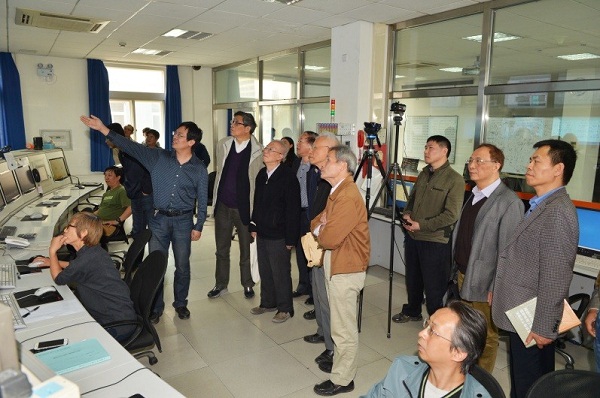On April 12th, the Chinese Academy of Sciences Bureau of Facilities Support and Finances invited an expert working group for an on-site review of the collision luminosity at the Beijing Electron Positron Collider Upgrade Project (BEPCII) at the Institute of High Energy Physics.
The review panel listened to reports on the testing method of the collision luminosity and calibration, studies on luminosity commissioning and self-test results. They also visited the accelerator tunnel. They reached a unanimous conclusion that after BEPCII luminosity reached 3.2×1032cm-2s-1 and passed national acceptance in July 2009, the machine ran successfully for high energy physics experiment data taking. Its performance was efficient and stable at beam energies from 1 to 2.3 GeV. After six and a half years of hard work, BEPCII luminosity reached its design parameters of 1×1033cm-2s-1 at an energy of 1.89 GeV.
Prof. CHEN Hesheng, Manager of the BEPCII Project, expressed his appreciation to the review panel. He gave a brief history of the BEPCII machine since its construction in 2004 and completion in 2008. In the years since passing national acceptance in 2009, many significant scientific results were achieved at the machine, such as the discovery of the Zc3900. The improvement of the collision luminosity will offer a better chance to discover more physics results in the future.
IHEP staff will strive to secure a stable and efficient running of BEPCII at high luminosity, thus producing more original research achievements in the field of tau-charm physics, said Prof. WANG Yifang, Director of IHEP.

BEPCII luminosity passes official review (Image by IHEP)